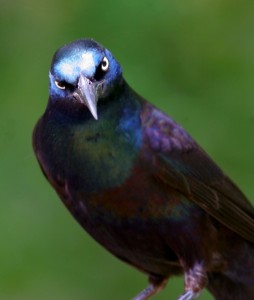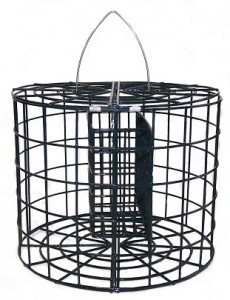
The “birds” are back.
It’s hard not to think of Alfred Hitchcock’s classic film when gangs of noisy blackbirds descend upon our feeders.
We’re talking, of course, about grackles and starlings.
They are called many names for their bullying and aggressive behaviour but to the question “are they invasive?”: the answer is yes and no.
Common Grackles, technically, are not classified as an invasive species; they’re protected as a species alongside the many prettier, quieter or more majestic birds we love. But they are aggressive towards other birds, they do damage crops and they are known to raid nests of other birds, stealing eggs or nestlings. So they are easily considered pests.
European Starlings, introduced to North America in 1890, are considered an “invasive alien,” which means their behaviour, in excessive numbers could put native populations at risk, not only of birds, but other ecosystems. They are certainly known for eating millions of dollars worth of grain every year and have the tendency of ejecting blue bird eggs from nesting boxes.
Safe to say, neither are going to win most popularity contests. And they’re notoriously bossy and voracious eaters at our feeders.
Our suggestion is to keep them at a distance. Which means, change your bird-feeder contents to food grackles and starlings don’t like.
Here’s a good strategy:
• Switch out the seed types. Remove all sunflower seeds and peanuts as that’s what they like. (Put what’s left into the freezer until fall.)
• Use weight sensitive feeders, caged feeders, upside-down suet feeder and Nyger feeders.

• Use the squirrel-free blend we carry in the shop – it really should be called grackle- and starling-free.
• Use safflower, Nyger and wild finch blends. (Safflower is disliked by both birds and Nyger feeder openings are too small for their large beaks.)
• Be patient and persistent. Pesky birds may still go through the feeder looking for seeds they like. It could take 3 to 4 weeks for them to change their habits.
Birds that will return include cardinals, chickadees, goldfinches, house finches, nuthatches, grosbeak, pine siskins, purple finches, Junco’s, doves.
With these changes, grackles, starlings, blue jays and brown headed cowbirds will be discouraged.
According to Cornell Lab of Ornithology, starling populations are actually plumetting. Species and habitats thought to be at risk by starling behaviour are doing better than first thought.
So when fall comes and you see a spectacular murmuration of starlings, you’ll be reminded, as we are, that life is full of contradictions and that we can find a way to be grateful for beauty and grace from a creature that annoys us so much.
See what a starling murmuration look like: Video of a starling murmuration.
~
